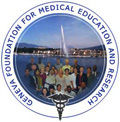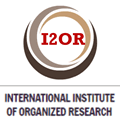Educational program on stroke and risk factors for adults aged 45-59
Keywords:
stroke; risk factors; educational programAbstract
Introduction: The increase in the magnitude and severity of strokes has exceeded all expectations in Latin America and the Caribbean. In Cuba, the incidence of this disease has decreased due to action on modifiable risk factors.
Objective: To develop an educational program on stroke and risk factors for adults between 45 and 59 years of age.
Methods: An intervention study was conducted at the "Marta Abreu" Polyclinic from January 2022 to December 2024. The population consisted of 140 patients between 45 and 59 years of age from the "Brisas del Oeste" neighborhood. The sample (84) was selected using simple random probability sampling. A knowledge assessment questionnaire was administered to identify needs, and the educational program was designed and evaluated by specialists. It was implemented and evaluated in practice using the positive-negative-interesting technique and participant observation. The McNemar test was used for statistical analysis.
Results: The sample was more likely to be male (53.6%), to be between 45 and 49 years old (47.6%), and to have a secondary education level (33.3%). Initially, inadequate assessments of the dimensions explored in the knowledge questionnaire prevailed, with statistically significant changes to adequate assessments after the implementation of the designed educational program.
Conclusions: An educational program was developed, evaluated by experts, which contributed to improving the general level of knowledge about stroke, associated risk factors, complications, and mortality in Cuba.
Downloads
References
1. Díaz R, Díaz J, Fuenmayor-Ojeda V, Parejo JA. Insuficiencia cardíaca aguda: análisis clínico epidemiológico. Med Int [Internet]. 2018 [citado 10/02/2025]; 34(4): [aprox. 10p.]. Disponible en: https://pdfs.semanticscholar.org/e111/f9b9cd9db3b02d6a89795db-42ba5b1c210a2.pdf
2. Berenguer-Guarnaluses LJ, Pérez-Ramos A. Factores de riesgo de los accidentes cerebrovasculares durante un bienio. MEDISAN [Internet]. 2016 [citado 10/02/2025]; 20(5): [aprox. 2p.]. Disponible en: https://www.redalyc.org/pdf/3684/368446344005.pdf
3. Herrera-Almanza L, Roldan-Tabares MD, Rolda-Isaza M, Castañeda-Palacio S, Uribe-Ramírez M, Gaviria-Rivas S, et al. Accidente cerebrovascular: una mirada general e indicadores novedosos de su morbimortalidad. Salutem Scientia Spiritus [Internet]. 2023 [citado 10/02/2025]; 10(1): [aprox. 2p.]. Disponible en: https://www.researchgate.net/publication/381157488_Accidente_cerebrovascular_Una_mirada_general_e_indicadores_novedosos_de_su_morbimortalidad
4. Echevarría-Parlay JC, Suarez-Rivero B, Belaunde-Clausell A, Tornes-Alonso K. Caracterización de pacientes con síndrome metabólico en ingreso hospitalario por enfermedad cerebrovascular. Arch Univ “GenCalixto García” [Internet]. 2020 [citado 10/02/2025]; 8(1): [aprox. 5p.]. Disponible en: https://www.revcalixto.sld.cu/index.php/ahcg/article/view/450
5. World Stroke Organization (WSO): Global Stroke Fact Sheet 2022. Organización Mundial del Accidente Cerebrovascular (world-stroke.org) Hoja-informativa-de-wso-global-stroke-2022 [Internet]. Venezuela: Academia Nacional de Medicina; 2022 [citado 29/04/2025]. Disponible en:
https://academianacionaldemedicina.org/publicaciones/div/hoja-informativa-de-wso-global-stroke-2022/
6. Ropper AH, Samuels MA, Klein JP, Prasad S. Enfermedades cerebrovasculares [Internet]. New York: Mc Graw-Hill; 2023 [citado 10/02/2025].Disponible en: https://accessmedicina.mhmedical.com/content.aspx?bookid=1908§ionid=141328727
7. Pérez-Lache N, Zamora-Mallet M, Paz-Sendín L, Arrieta-Hernández T, Santos-Martinéz ÁM. Aspectos generales de la enfermedad cerebro vascular en el adulto mayor. Rev Cubana Med Mil [Internet]. 2024 [citado 10/02/2025]; 53(2): [aprox. 10p.]. Disponible en:
https://scielo.sld.cu/scielo.php?script=sci_arttext&pid=S0138-65572024000200040&lng=es
8. Vial-Alliende T, Ortiz-Saez C, Baldessari-Bortolotti C, Seguel-Martinez D. Intervenciones de enfermería para la prevención del accidente cerebrovascular: una revisión bibliográfica. Rev Conflu [Internet]. 2022 [citado 10/02/2025]; 5(1):[aprox. 3p.]. Disponible en: https://revistas.udd.cl/index.php/confluencia/article/view/673
9. Ajila-Enríquez V. Actuación del personal de enfermería en los protocolos de atención en pacientes con accidente cerebro vascular (acv) isquémico en áreas críticas. ISTER [Internet]. 2022 [citado 10/02/2025]; 5(4):[aprox. 2p.].Disponible en: https://revista.ister.edu.ec/ojs/index.php/ISTER/article/view/189/197
10. National Institute of Neurological Disorders and Stroke, National Institutes of Health. Accidente cerebrovascular. Esperanza en la investigación [Internet]. USA: NIH; 2021 [citado 10/02/2025]. Disponible en: https://catalog.ninds.nih.gov/sites/default/files/publications/accidente-cerebrovascular.pdf
11. Fernández-Concepción O, Pando-Cabrera A, Buergo-Zuasnavar MA. Afecciones más frecuentes del sistema nervioso central: enfermedad cerebrovascular. En: Álvarez-Sintes R, Hernández Cabrera G, Baster-Mora JC, García-Nuñez RD. Medicina General Integral. La Habana: Editorial Ciencias Médicas; 2014. p. 1571-1590.
12. Díaz-Cabezas R. Conocimiento de síntomas y factores de riesgo de enfermedad cerebrovascular en convivientes de personas en riesgo. Acta Neurol Colomb [Internet]. 2015 [citado 10/02/2025]; 31(1): [aprox. 2p.]. Disponible en: https://www.scielo.org.co/pdf/anco/v31n1/v31n1a03.pdf.
https://doi.org/10.22379/242240223
13. Ministerio de Salud Pública. Anuario estadístico de salud 2023 [Internet]. La Habana: Minsap; 2024 [citado 10/02/2025]. Disponible en: https://files.sld.cu/dne/files/2024/09/Anuario-Estad%c3%adstico-de-Salud-2023-EDICION-2024.pdf
14. Feigin VL, Owolabi MO. Soluciones pragmáticas para reducir la carga global de accidentes cerebrovasculares: una Comisión de Neurología de la Organización Mundial del Ictus y Lancet. Lancet Neurol [Internet] 2023 [citado 10/02/2025]; 22(12): [aprox. 3p.]. Disponible en: https://pubmed-ncbi-nlm-nih-gov.translate.goog/37827183/
15. Feigin LVL, Brainin M, Norrving BO, Martins SO, Pandian J, LindsayP, et al. World Stroke Organization: Global stroke fact sheet 2025. Int J Stroke [Internet]. 2025 [citado 10/02/2025]; 20(2): [aprox. 3p.]. Disponible en: https://pmc-ncbi-nlm-nihgov.translate.goog/articles/PMC11786524/?_x_tr_sl=en&_x_tr_tl=es&_x_tr_hl=es&_x_tr_pto=tc
16. Pupo-Cruz VL, Hernández-Velázquez FM, Fernández-Sarmiento DM. Intervención educativa sobre los factores de riesgo de la enfermedad cerebrovascular en pacientes adultos mayores [Internet]. 2024 [citado 10/02/2025]. Disponible en: https://eventosapspr.sld.cu/index.php/apspr/2024/paper/viewFile/32/195
17. Acosta-Alonso NM, Gómez-Carro RL, Leiva-Cubeñas YE, García-Galindo L, Morales-Torres A. Intervención educativa sobre factores de riesgos de la enfermedad cerebrovascular en pacientes del consultorio 10. Morón. En: MeFAvila. III Jornada Virtual Internacional de MEDICINA FAMILIAR. 2024 oct15-15nov; Ciego de Ávila: Universidad de Ciencias Médicas de Ciego de Ávila; 2024. Disponible en: https://mefavila.sld.cu/index.php/mefavila2024/2024/paper/viewFile/814/723
18. Maturrano-Loza FA. Intervención educativa preventiva del accidente cerebrovascular en el conocimiento, actitud y práctica de usuarios diabéticos y/o hipertensos, hospital Chancay-2018 [Tesis]. Huacho: Universidad Nacional José Faustino Sánchez Carrión; 2019. Disponible en: https://repositorio.unjfsc.edu.pe/bitstream/handle/20.500.14067/2769/MATURRANO%20LOZA%2C%20FIORELLA%20DE%20LOS%20ANGELES.pdf?sequence=1&isAllowed
19. Del Río Monier YM, Maren Barroso L, Borrero Del-Río LY. Intervención educativa sobre prevención de la enfermedad cerebrovascular en adultos hipertensos. En: JORCIENCIAPDCL. IV jornada y taller nacional científico de residentes y profesionales de la salud [Internet]. La Habana: Policlínico Docente Cristóbal Labra; 2025. Disponible en:
https://jorcienciapdcl.sld.cu/index.php/JORCIENCIAPDCL2025/2025/paper/viewFile/1008/1535
20. Hernández -Velázquez FM, Santiesteban-Rodríguez BC, Pizarro-Hechevarría RJ. Intervención educativa sobre los factores de riesgo de la enfermedad cerebrovascular en pacientes adultos mayores. Inmedsur [Internet]. 2022 [citado 10/02/2025]; 5(1):[aprox. 3p.]. Disponible en:https://www.inmedsur.cfg.sld.cu/index.php/inmedsur/article/view/184
21. Córdova-López PF. Estudio experimental de intervención educativa en conocimientos, actitudes y prácticas para ictus. Revista de la Facultad de Ciencias Médicas Universidad de Cuenca. Ecuador [Internet]. 2020 [citado 10/02/2025]; 37(3): [aprox. 3p.]. Disponible en: https://publicaciones.ucuenca.edu.ec/ojs/index.php/medicina/article/view/2733
22. Zambrano-Cevallos J, Vega-Intriago JO. Programa educativo para la familia de pacientes con evento cerebrovascular en el área de Medicina Interna del Hospital Rodríguez Zambrano. Revista de Filosofía, Letras y Ciencias de la Educación [Internet]. 2021 [citado 10/02/2025]; 6(1): [aprox. 3p.]. Disponible en: https://revistas.utm.edu.ec/index.php/Cognosis/article/view/3346/3266
23. Ferreira JESM, Cavalcante TF, Silva RM, Oliveira LR, Nemer APL, Moreira RP. Evaluación de un juego educativo sobre salud cerebrovascular para personas con enfermedades crónicas: estudio cuasiexperimental. Av Enferm [Internet] 2022 [citado 10/02/2025]; 40(2):[aprox. 2p.]. Disponible en: https://www.scielo.org.co/scielo.php?script=sci_arttext&pid=S0121-45002022000200283
Downloads
Published
How to Cite
Issue
Section
License
Copyright (c) 2025 Luis Enrique Pérez Guerra, Ofelia Rodríguez Flores, Isabel Cristina Muñiz Casas, Mary Elena López García, Margarita Puerto Díaz, Ivette Irene Molina Linares

This work is licensed under a Creative Commons Attribution-NonCommercial 4.0 International License.
Authors who have publications with this journal agree to the following terms:
- Authors will retain their copyright and assign to the journal the right of first publication of their work, which will simultaneously be subject to a Creative Commons License / Attribution-Noncommercial 4.0 International (CC BY-NC 4.0) that allows third parties to share the work as long as its author and first publication in this journal are indicated.
- Authors may adopt other non-exclusive license agreements for distribution of the published version of the work (e.g., depositing it in an institutional repository or publishing it in a monographic volume) as long as the initial publication in this journal is indicated.
- Authors are allowed and encouraged to disseminate their work through the Internet (e.g., in institutional telematic archives or on their web page) before and during the submission process, which can produce interesting exchanges and increase citations of the published work. (See The effect of open access).





 november 15 2025
november 15 2025


